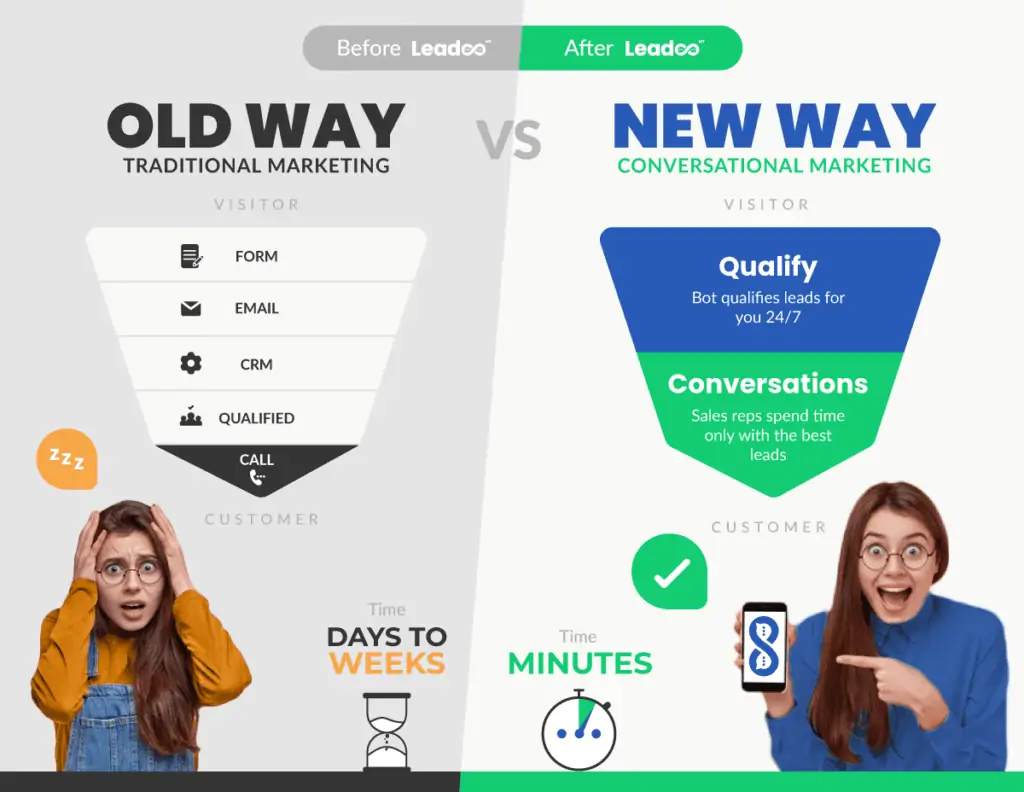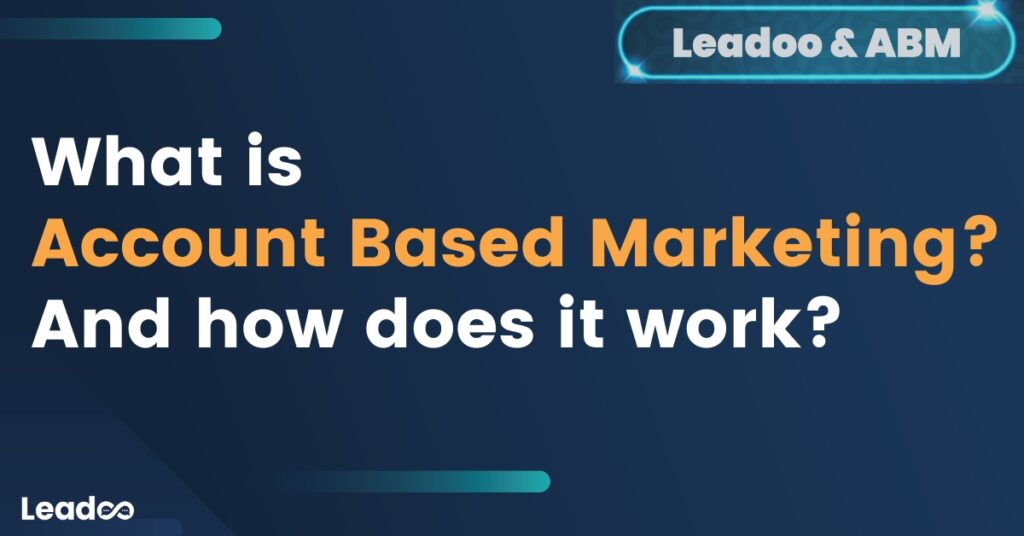Company identification tools are interesting, to say the least. They’ll tell you who visits your website – and if you’re lucky, the software will show at least some actions taken on the site and some basic information about the company.
As much as we’d love to say we’re very aligned with sales teams, there are often some gaps to bridge. The biggest one is the fact that marketing is focused on lead generation and often measured against it, but doesn’t necessarily have all the tools to go the full nine yards.
At the same time, sales has software after software to help with prospecting, contacting, and following up, but they might not have the visibility over what actually brought this person to your website in the first place.
Let’s build a bridge that lasts, once and for all, shall we?
What we’ll cover in this post 💡
Building Step 1: Validate your efforts
You need to know who visits your site to be able to validate your audience and efforts. Plain and simple.
Taking this a bit further, you should know which companies came through which campaigns or other marketing activities. This way you’d be able to validate channels, campaign messages, and more, having full visibility to it.
Today you can probably tell how many visitors you get, where they’re geographically coming from, and which devices they use. From different analytics tools, you’re able to parse together a Frankenstein’s monster-looking dataset, that might give you a little more insight into your website visitors and their behavior.
In 99% of the cases, you’re still missing out on most real-time data, especially when it comes to companies visiting your site and you being able to take easy actions based on the insights you’re gaining.
The key benefits of identifying companies from your site
- Validating the traffic
- Validating marketing efforts
- Validating your target audience
- Actionable immediately and in the future
Building step 2: Better marketing attribution
Attribution tools are mostly focusing on putting together specific datasets and visualising that data. They’re a brilliant tool for any marketer’s stack, but only if you have time to use it. Otherwise, it’ll just turn into an unintentional, abandoned data warehouse.
If your attribution tool doesn’t include any kind of identified company data today, how are you then handling the attribution? Company data is key in B2B marketing.
Knowing what kind of companies come from which traffic sources, how long are their customer journeys and what are traffic sources during the customer journey are things that every B2B marketer should be aware of.
What you should add to your attribution
- Companies identified from different sources
- Customer journey sources
- Touchpoints needed
- Organic/marketing-led conversion sources
- Sales-led conversion sources
Building step 3: Right tools for the right tasks
Marketers also tend to have a lot of different tools in active or semi-active use. If you have the more expensive and broader ones, it often dictates a big bunch of how you do your work and what’s the strategy.
It often happens that the limitations of one tool become a marketer’s strategy. Don’t be that marketer.
As a Marketing Ops person, I’m all about the right tools for the right tasks – and that the tools are used to their full potential. I’m also very much about the targets we have, so the tools need to serve an actual purpose, helping us to hit the goals.
As marketers we also tend to have different tools for different data collection purposes but they don’t usually work too well together. That’s why for example company identification tools can easily be viewed as something more for salespeople. It can be tricky to integrate the company identification tools to be a part of your existing processes, if it’s not crystal clear what you can do with it.
Is these a task that a company identification tool can do for a marketer? Yes. Multiple, even.
Can it be tricky to figure out how to make it as easy as possible, for the tool to be a seamless part of what you’re doing and not just an extra platform to try to follow up on? Also yes.
Therefore…
Building step 4: Integrations and enabling
It is of utmost importance that the tools you have in use are integratable together. You shouldn’t have to jump to do a ton of manual work on multiple platforms when you could utilise the collected data easily across at least most of them.
In a company identification software case, you should be able to integrate the information into your CRM, it’s a no-brainer. You should also be able to use the data for campaign audiences across all different ad platforms. You should be able to create effective audiences for your email campaigns. You should be able to personalise website experiences with this data. You get the drill.
You should be able to do a lot of things with the data, without needing to hassle with a lot of different software to get it done.
Less hassle means better end results.
Integrating the company identification tools you’ll also be enabling sales to benefit from this information. Not just that a company has been identified and this information gets updated to the CRM record, but also all the activities taken, discussions had on the website, everything.
Integrations enable better cross-functional collaboration and it is crucial for marketing and sales. We only succeed together, after all.
Building step 5: Converting soft and hard leads
If we’re defining leads, we need to admit that a person visiting your website isn’t a lead per se. It’s a website visitor with a reason of visiting your website. It’s a soft lead at best.
Then we have the consentfully self-converted leads, who have given us some kind of a sign that they want us to be in touch with them; they filled a form, they converted through a chatbot, the list goes on.
Get yourself a company identification tool that helps you also with on-page conversions. This way the tool will not feel that it only belongs to sales nor does it get cancelled right before the next subscription period is about to start.
Converting the companies visiting your site isn’t just sales teams’ job. As said, we only succeed together.
What to look for in a company identification tool?
It’s a quick list to check:
- Can you take it to be a part of your processes
- Can you integrate it into other systems with ease
- Can you use it easily for ad audiences
- What kind of information can you get with the tool
- Can you use it for other conversion purposes
- Does the provider offer any kind of support to get the most out of the tool
- Do they charge you based on the amount of identified companies
And ask yourself; will sales benefit from this? Who else will benefit from this? Who are we able to enable to do their best work with this information?
Leadoo Conversion Insights and Company Identification
Of course, we do have a solution for this. We’re all about enabling marketers to work more efficiently, and reach goals.
Our Conversion Insights – analytics gives you a full 360° view of your customer journeys, paired with detailed company data and company-level buyer’s journeys. You can integrate our Company Identification data with Google Tag Manager and create unbelievably precise retargeting audiences.
And while you’re integrating the Company Identification to your Google Tag Manager, integrate it also into your marketing automation and / or CRM system and make it trigger a specific action.
Example of automating actions from Company Identification
Company XYZ has been once converted through your website through an event sign-up. They never attended the event and your sales team’s efforts seem to go to waste, since the company isn’t picking up their phone and are not replying to any emails.
Company Identification detects them 6 months later on your website. They’re checking pricing. If you don’t act immediately, the customer might ghost you again for another 6 months. You have a trigger set up in your CRM that when the company is detected being active on your website, the correct salesperson is notified and they should pick up the phone right now. If the call goes unanswered, your marketing automation will send an email to the customer asking that would now be a better time to talk prices.
Seriously, make the software work for you and not you for the software.
What else can you do with Leadoo Company Identification?
For example, by pairing Company Identification with Prospector, you’ll get access to a vast database of decision-maker data.
Having Source Insights in use you’ll be able to see what kind of conversion journeys these companies have. By this, you’re also able to easily see what channels are the best in attracting the companies in the first place, through which channels they return, and what eventually converts them.
And yes, Leadoo allows also on-page conversions, and not just the company identification bits. A large number of tools to choose from make it easy to pick the best ones for your use case and customers.
But this is already a long one, so maybe it’ll make the most sense to leave you with the question: can you afford not to be interested in the things mentioned above?
Spark a discussion right here and we’ll show you how it’s done 👇🏻


